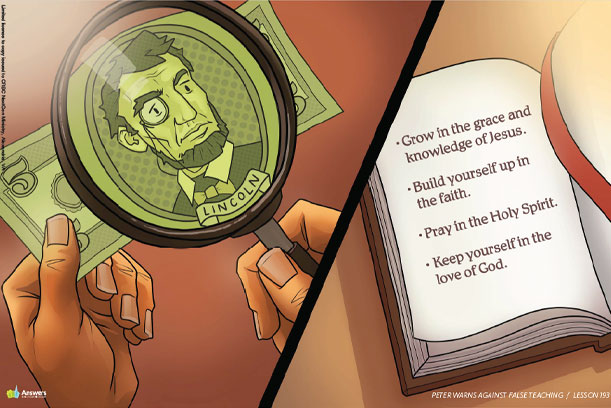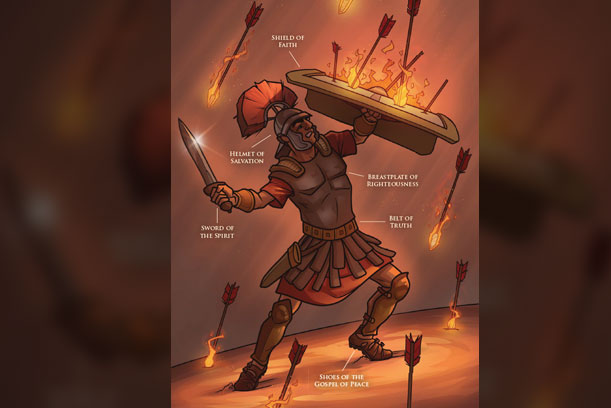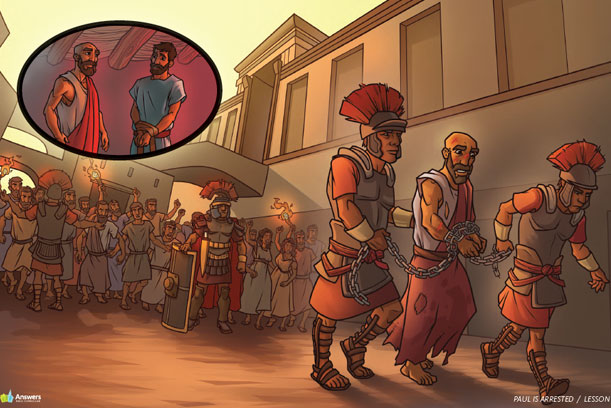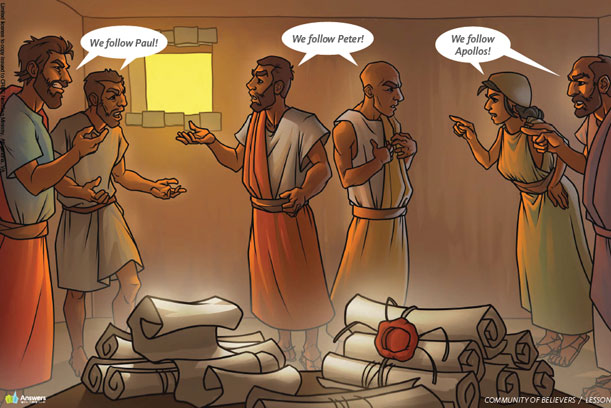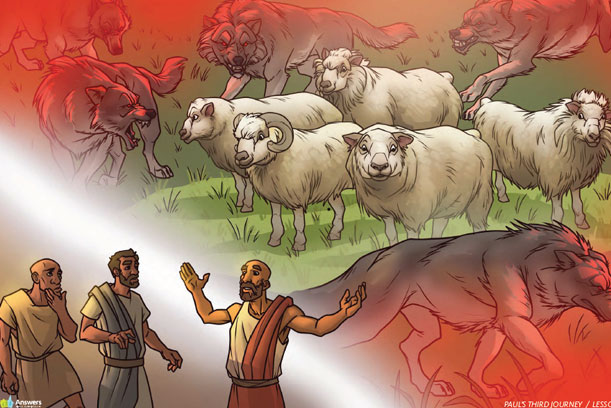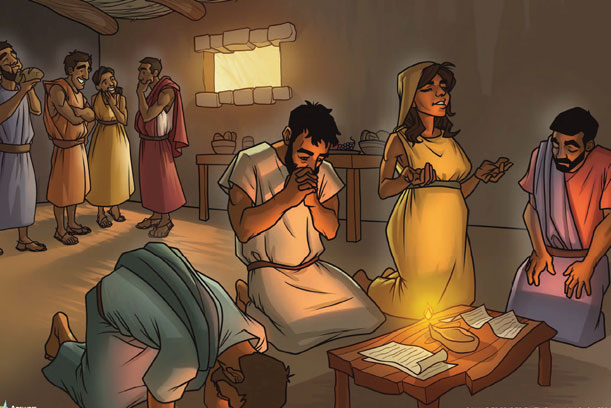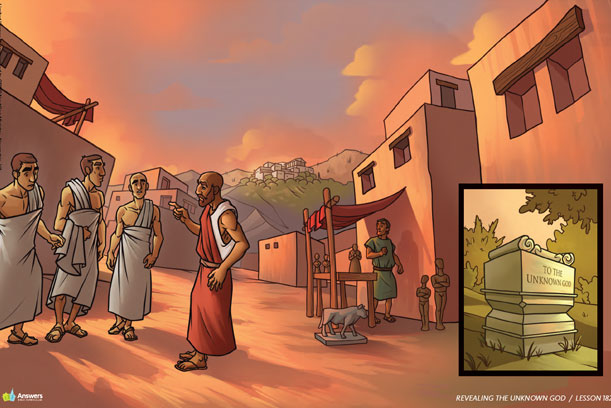
Awaiting the Consummation
God has planned what will happen at the end of time. He promised in his Word that believers can look forward to a time when there will be a new heaven and a new earth with no more sin. It will be a place where they will enjoy eternity with God. But unbelievers will be separated from God and suffer eternal punishment.
Jesus Will Return
Jesus said his followers should be ready because one day he is coming back in glory. On that day, all eyes will see him and hear the voice of an archangel and the trumpet of God. All believers will be gathered to Jesus to be with him for all eternity.
Prayer of Believers
When we become children of God, we gain access to God through prayer. God desires for us to bring all our requests to him—our good Father—instead of worrying about them. Christians have the privilege to come to God in prayer with adoration and praise, confession of sin, thanksgiving, and supplication.
John Teaches Christian Love
John wrote to the believers so they could have confidence in their faith and recognize true children of God. Christians will be known by their love for God, shown through obedience to his commandments, and their love for each other, shown through sacrificial service in imitation of Christ’s love demonstrated on the cross.
Jesus Is Our High Priest
The sacrificial system of the Old Testament was a shadow of things to come. Jesus replaced the old system with a new and better covenant, sealed by his own blood. He became like us in every respect, but without sin, so he could intercede perfectly on our behalf as our high priest.
Paul Exhorts Timothy
Paul wrote to Timothy and Titus, his sons in the faith, to encourage them in their roles as leaders of the church. Paul pointed these men back to Scripture as the foundation for godly training. Paul also instructed Timothy to lead by example, doing his best to be an approved worker, and encouraged him to train continually in righteousness.
Peter Warns Against False Teaching
Peter wrote to the believers in Asia to warn them of the false teachers who would secretly bring heresies into the church. He instructed believers to build up their faith by adding godly qualities so they would grow in holiness and be able to stand firm against false teaching. The Apostle John and Jude also warned against false teachers and gave instructions to keep believers from being led astray.
Peter Describes Holiness
Peter called believers to be holy, imitating the Holy One who called them. According to Jesus, the standard for holiness can be wrapped up in two commandments—to love the Lord with all your heart, soul, and mind, and to love your neighbors as yourself. God equips believers with the armor of God to help them stand against the devil’s attacks and to live holy lives pleasing to God.
Paul Encourages the Philippians
Paul was imprisoned in Rome because of false accusations, yet his letter to the Philippians was filled with joy and thanksgiving. In spite of his circumstances, Paul rejoiced to see the gospel continuing to be spread and Christ receiving the honor and glory he is due.

Paul Writes from Prison
While under house arrest in Rome, Paul wrote letters to the believers in Ephesus and Colossae. He reminded them that they had died to sin and were made alive in Christ. He taught them to put off the things that characterized their old life and instead seek the things of God.
Paul’s Journey to Rome
After a stormy and treacherous journey, Paul, as a prisoner, arrived in Rome, just as God had promised he would. Once there, Paul had the opportunity to proclaim the message of Jesus Christ. He did this while under house arrest, preaching to everyone who would come and listen.
Paul is Arrested
Paul returned to Jerusalem after his third missionary journey, even though in every city the Holy Spirit testified that he would face imprisonment and affliction. Paul was seized by the Jews, who demanded that he be killed. God protected him and gave him opportunities to share the gospel with various rulers.
Children of God
When people receive Jesus as their Savior, they become children of God. God is their Father, and other believers are their brothers and sisters. This special relationship with God also comes with a promised inheritance in heaven. Being adopted into God’s family is an amazing gift.
Community of Believers
Paul wrote letters to the church at Corinth to admonish their worldliness and encourage unity and selflessness. He taught them what it meant to be a church—many members but one body—and how to use their gifts to love and serve one another.
Paul’s Third Journey
On his third missionary journey, Paul stayed in Ephesus longer than two years. There he spoke boldly to both Jews and Greeks, teaching them the truth of the gospel of Jesus Christ. Many people believed, and the message reached all of Asia. Later, Paul met with the leaders of the church of Ephesus to warn them about false teachers who would come in among the flock, trying to lead believers astray.
Paul Describes Faithful Living
Paul wrote to the Thessalonians to encourage them in their faith. They had become examples of faithful living, proclaiming the gospel in spite of persecution. Paul encouraged them to continue, looking to the hope of Jesus’ second coming as their comfort and motivation. Paul also warned them against an idle lifestyle and charged them to not grow weary of doing good.
Revealing the Unknown God
When Paul visited Athens, he was disturbed by the idolatry that filled the city. He shared the good news of Jesus Christ in the marketplace daily. Some of the Greek philosophers heard him and invited him to share these strange new beliefs with them. Paul began by introducing them to the Creator God, building a foundation from which to understand that Jesus is the Christ.
Paul’s Second Journey
On Paul’s second journey, Paul and Silas proclaimed Jesus in Philippi to a woman named Lydia, whose heart was opened to receive the gospel. When Paul and Silas were thrown into prison, they praised God and were able to share the word of the Lord with the Philippian jailer.








